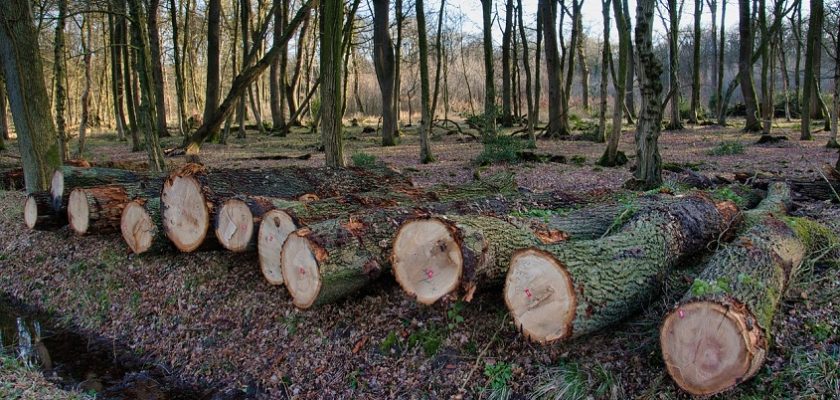The Effects of Deforestation on the Environment and Wildlife
- Posted on January 27, 2023
- By Vishakha Yadav
- Read 3 minutes
Table of Content

Deforestation refers to the clearing of forests, whether naturally or artificially. This process can have a significant impact on both the environment and wildlife. The loss of trees leads to a reduction in biodiversity, soil erosion, and disruption of water cycles. Additionally, deforestation can cause climate change, as trees play a crucial role in carbon sequestration. Wildlife is also greatly impacted by deforestation, as it leads to loss of habitat, disruption of food chains, increased vulnerability to hunting and poaching, and loss of genetic diversity. The impact of deforestation is global, and it’s a pressing issue that needs to be addressed to ensure the survival of both the environment and wildlife.
The causes of deforestation
- Logging: The cutting down of trees for timber and wood products is one of the leading causes of deforestation. Logging can be done for commercial purposes, such as to produce paper or furniture, or for land development.
- Agriculture: Clearing forests to create land for farming and grazing is another major cause of deforestation. This is particularly prevalent in tropical regions, where valuable crops such as palm oil and soybeans are grown.
- Urbanization and infrastructure development: As human populations grow and urban areas expand, forests are often cleared to make way for new homes, roads, and other infrastructure.
- Climate change: Climate change can also contribute to deforestation, as rising temperatures and changing rainfall patterns can make it difficult for certain tree species to survive. Additionally, drought and fires can lead to the death of trees and deforestation.
- Illegal activities: In many countries, illegal logging and land grabbing are major issues that contribute to deforestation. These activities are often driven by corruption and a lack of government oversight.
The effects of deforestation on the environment
- Loss of Biodiversity: Deforestation results in the destruction of habitats for many species of plants and animals, leading to a loss of biodiversity. This can have a ripple effect throughout ecosystems, as the loss of one species can disrupt food chains and affect other species.
- Soil erosion and degradation: Trees play a crucial role in maintaining the health of soil. Their roots bind soil in place, which helps to prevent erosion. When forests are cleared, the soil can become loose and easily washed away by rain, leading to soil degradation and erosion.
- Climate change: Trees absorb carbon dioxide from the atmosphere and store it as carbon in their biomass. Deforestation releases this stored carbon back into the atmosphere, contributing to climate change. Additionally, deforestation can disrupt the water cycle, leading to changes in precipitation patterns.
- Disruption of water cycles: Forests play an important role in regulating the water cycle, by absorbing and releasing water into the atmosphere through a process called transpiration. When forests are destroyed, the water cycle is disrupted, leading to changes in precipitation patterns and an increased risk of flooding and droughts.
- Loss of carbon sink: Forests are also known as carbon sinks, which means they store large amounts of carbon. Deforestation means the loss of these carbon sinks which in turn contribute to the increase of carbon dioxide in the atmosphere and global warming.
The effects of deforestation on wildlife
- Loss of habitat: One of the most significant impacts of deforestation on wildlife is the loss of habitat. Many species of plants and animals are adapted to specific types of forests, and when their habitats are destroyed, they are forced to find new homes or die.
- Disruption of food chains: Deforestation can also disrupt food chains, as many species rely on the forest for food and shelter. When forests are destroyed, it can lead to a decline in certain species, which can affect other species that rely on them for food.
- Increased vulnerability to poaching and hunting: Deforestation can also make wildlife more vulnerable to hunting and poaching. As forests are cleared, animals are forced to move into new areas, where they may be more easily hunted or poached.
- Genetic isolation: Deforestation can also lead to genetic isolation, as populations of plants and animals become separated from one another. This can lead to inbreeding, which can reduce the genetic diversity of a population and make it more vulnerable to disease and environmental changes.
- Loss of genetic diversity: Deforestation can lead to a loss of genetic diversity, as the destruction of habitats can lead to the extinction of rare or unique species. This can have a long-term impact on the health and resilience of ecosystems, as a loss of genetic diversity can make it more difficult for species to adapt to changing conditions.
